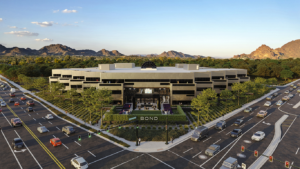Long-time Arizona residents know and understand the unpredictability of monsoon season. Monsoon season arrives every summer here in Arizona lasting from June through the end of September—with some seasons bringing extremely intense rainstorms. While the past few years have brought modest amounts of rain, most Arizonans remember the extraordinary storms that occurred in 2014—with multiple 100-year storm events recorded by the Maricopa County Flood Control District. A 100-year storm is a storm event that has an intensity that is likely to recur once every hundred years. The 2014 monsoon season wreaked havoc throughout Phoenix, ravaging residential communities and causing extensive flooding damage. Many people may not realize the number of real estate issues that can accompany monsoon season.
READ ALSO: Real Estate Pulse: How to avoid misrepresentation in real estate
Monsoon season can lead to liability for Arizona residents who knowingly or unknowingly develop their property in a manner that changes the nearby drainage conditions. State law, and most local laws, render changing nearby drainage conditions unlawful. Under state law, a mechanism exists to seek injunctive relief and force the offending homeowner to restore the historical drainage conditions.

Examples where homeowners may unwittingly be exposing themselves to liability include: (a) constructing a fence on or around the perimeter of one’s property, (b) importing dirt fill for landscape design purposes that change the elevation of property, or (c) constructing a structure or structures on property that alter drainage conditions. While such conduct appears benign, regardless of the motives behind the homeowner, liability could ensue if it alters nearby drainage conditions and causes damage to a neighbor.
Neighbors generally wait until a large storm has occurred (during monsoon season) before bringing suit against the homeowner that changed the drainage conditions in the neighborhood. By that point, the aggrieved neighbor’s property likely has incurred damage from the water diversion. In extreme cases, the home may also experience water intrusion from the diversion of water flow. If you are aware of a neighbor who has altered drainage conditions based on development of their property, you should seek legal counsel to provide a legal assessment of your situation. Additionally, if you are aware of a neighbor who is in the process of developing their property in a manner that could adversely affect the nearby drainage conditions, you should likewise obtain an assessment from legal counsel.
In line with the above, it is also important to make sure you are not inadvertently violating Arizona law through any developments to your property. It is important to consult with an engineer and counsel prior to making developments to your property that could impact drainage conditions. You may need to submit drainage and grading plans to your local municipality for approval.
Finally, it is important to keep disclosure issues in mind. If your neighbor has engaged in a recent development that changed the drainage conditions such that in the next large rainstorm your property will experience an unusual and unnatural amount of water intrusion, you may have an obligation to disclose this fact to a prospective purchaser to your property. Otherwise, you may experience a downpour of legal issues. Likewise, if you recently purchased a new build, and your property is adversely impacted by a large rainstorm, you may have claims against a neighbor who changed the nearby drainage conditions. Also, you could have claims against the builder for breach of the implied warranty of habitability and workmanship.
If you have any additional questions, you can contact Ben Gottlieb at ben@mandglawgroup.com or 602-533-2840.
Ben Gottlieb is an attorney and founding partner of MacQueen & Gottlieb. If you have questions, you can contact him at ben@mandglawgroup.com, or call 602-533-2840.



